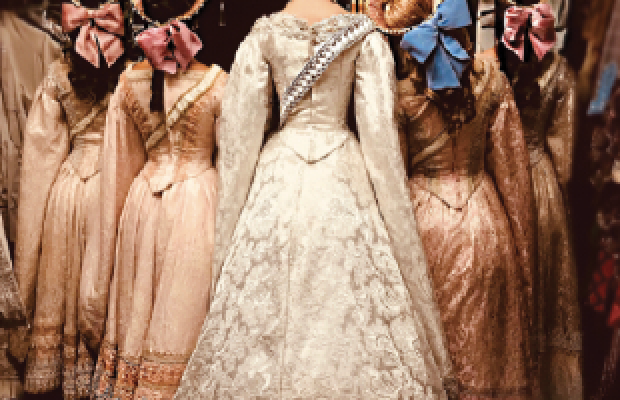Growing up as a child who adored animated movies with catchy songs I could sing over and over again, the film “Anastasia” was an instant favorite of mine. You can still find it on my Netflix list today, as it offers the perfect blend of beautiful animation, historical storytelling and iconic music. And when I found out I’d get to see that story on Broadway as a musical through my Loyola Residential College program, I couldn’t help but think it was a perfect fit. I was not to be disappointed.
“Anastasia” is the fictionalized story of Anya, an orphaned girl with no memory of her past, and her eventual revelation of her identity as Anastasia Romanov, the lost Romanov princess who should have died with her family at the start of the Bolshevik Revolution. The 1997 cartoon embellishes this story with magical elements and characters, elements that were removed with the production of the musical. These significant differences from the movie are the ones that give it a more mature and realistic feeling, and which work better on stage than elements of the movie would. The most noticeable change is the villain of the story; the cartoon’s magically evil Rasputin has been replaced by Soviet officer Gleb Vaganov (played by Ramin Karimloo), thus eliminating all the magical parts of the story all together. However, for fans who may be disappointed by this, I think this change does the story a great favor. Anastasia’s journey to remember her past and her eventual reunion with her grandmother greatly benefits from the increased emphasis that is put on her family at the beginning and during minor parts of the middle of the show. Her mission to discover her true identity and remember the family she once had feels more genuine, especially when faced with the realistic political and social events happening in 1927 Russia.
It would also be remiss of me not to mention the stage design and special effects that the show uses. The one Tony award the show won at this past year’s awards was for lighting and projection, and it cannot be understated how well-deserved that award is. The backdrop of the set, which is integrated into the walls of the buildings and rooms where the action is placed, are screens of high-quality moving projections that shift to fit the scenes. Songs and scenes placed on a moving train are facilitated by a rotating stage and the screens showing a track with scenery speeding by. Parts set in the Romanov’s palace are at one moment peaceful during a grand ball, with projected snow falling softly in the background, and at the next moment plunged into chaos with the shattering of glass, and the terrifying image of silhouetted soldiers with flowing red flags and smoke to match appearing larger-than-life in that same place. It was one of my favorite aspects of the show, as every setting was full of high-quality and immaculate details, and gave the show the extra pop it needed.
The most recent shows I’ve seen on Broadway in New York have been “Hamilton” and “Natasha, Pierre, and the Great Comet of 1812,” which are nonconventional shows to say the least. Going from a show like “Great Comet,” where the stage snaked around the center of a recreated 19th century Russian vodka club and actors danced, sang and played accordions just feet from me in the aisles, a more traditional setting like “Anastasia” was a definite transition. In comparison, it would be easy to say that “Anastasia” was boring or didn’t have as much to offer as the other shows, but I think that would be a serious misjudgment of the joy “Anastasia” brought me. Yes, the setup is very traditional and simple; actors stay on stage, with simple blocking and only specific moments of choreography. There are breaks for dialogue, which my previous two Broadway experiences lacked in; “Great Comet” and “Hamilton” are entirely sung with little to no spoken dialogue.
But more than anything, “Anastasia” is a beautiful story, and is told by an extremely talented cast. Christy Altomare is a lovely Anya/Anastasia, a physically small figure with a voice as powerful as it can be soft and emotional. Accompanying her is Derek Klena as Anya’s love interest Dmitry, a charming character who gets some really great songs where his voice shines through and rings throughout the entire theater. This show is also a case where comic relief can and does steal the show; John Belton and Caroline O’Connor as Vlad Popov and Countess Lily Malevsky-Malevitch have some of the most entertaining moments of the show, keeping the audience laughing up until and including the final bows.
I’ve loved “Anastasia” for longer than I can remember, and getting to see it as a stage show is something I would do again in a heartbeat. I adored every minute of it and would recommend it even for those who didn’t grow up learning the story; you’ll be charmed either way.
Rating: 4.5 out of 5 stars


Leave a Reply